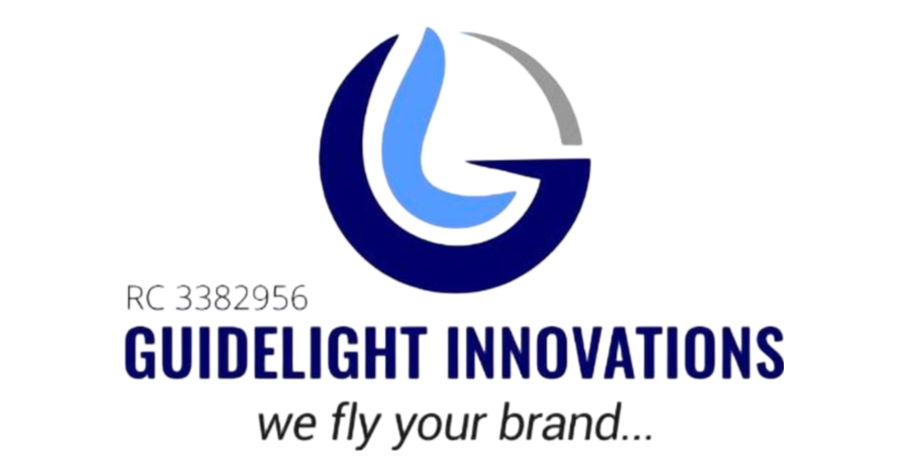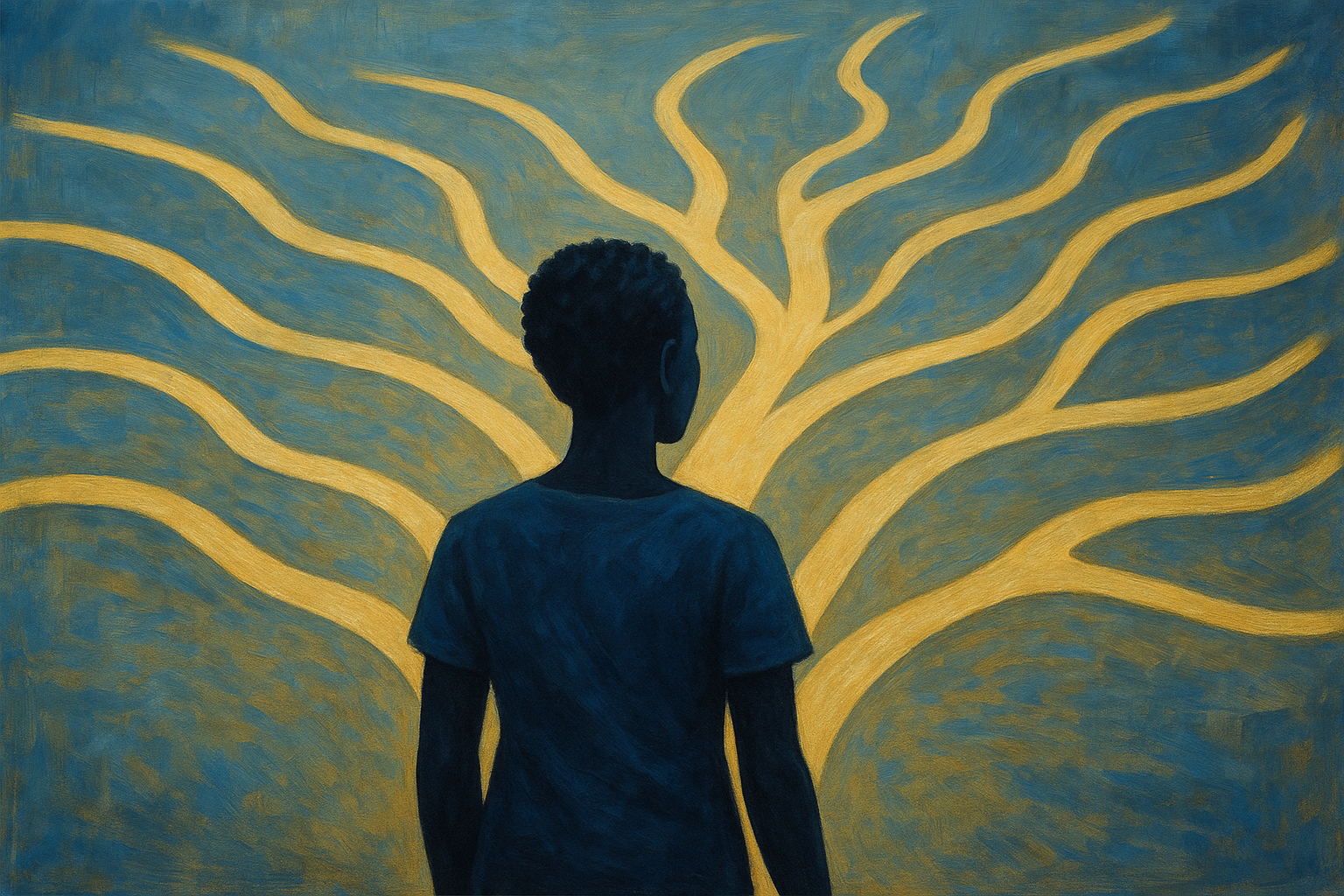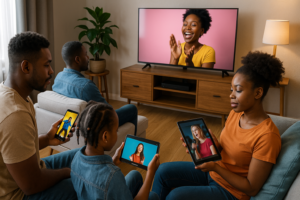Every day, you make thousands of decisions. Some are trivial—what to have for breakfast, which route to take to work, whether to check your phone one more time. Others are monumental—whether to accept a job offer, end a relationship, move to a new city, or start a business. While we can’t avoid making decisions, we can dramatically improve how we make them.
The quality of your decisions shapes the quality of your life. Yet, surprisingly few of us have been taught how to make decisions systematically and effectively. We rely on gut feelings, flip coins, ask friends for advice, or simply go with whatever feels easiest in the moment. Sometimes this works out fine. Other times, we’re left wondering why we keep making choices that don’t serve us.
The good news? Decision-making is a skill that can be learned, practiced, and refined. In this comprehensive guide, we’ll explore the science and art of making better decisions, uncover the hidden biases that sabotage our choices, and provide you with practical frameworks to navigate life’s crossroads with greater clarity and confidence.
Understanding How We Actually Make Decisions
Before we can improve our decision-making, we need to understand how decisions actually happen. The work of psychologist Daniel Kahneman, who won the Nobel Prize for his research on decision-making, revealed that we operate with two distinct systems of thinking.
System 1 is fast, automatic, and intuitive. It’s the mental shortcut system that allows you to catch a ball, recognize a friend’s face, or complete the phrase “bread and…” without conscious effort. This system is invaluable for navigating daily life efficiently, but it’s also prone to errors and biases because it relies on pattern recognition and emotional responses rather than careful analysis.
System 2 is slow, deliberate, and logical. It’s the system you engage when solving a complex math problem, comparing different insurance policies, or thinking through the implications of a major life decision. This system requires conscious effort and mental energy, which is why we can’t operate in System 2 mode all day—it’s simply too exhausting.
Most of our decisions, even important ones, are made primarily by System 1. We then use System 2 to rationalize choices we’ve already emotionally committed to. Understanding this dynamic is crucial because it reveals why we often make decisions that don’t align with our stated values or long-term goals. Research from behavioral economics has consistently shown that emotion, not logic, drives the vast majority of our choices.
The Hidden Biases Sabotaging Your Decisions
Our brains are remarkable instruments, but they come with built-in quirks that can lead us astray. These cognitive biases evolved to help our ancestors make quick decisions with limited information, but in the modern world, they often work against us. Recognizing these biases is the first step to overcoming them.
Confirmation bias is perhaps the most pervasive. Once we lean toward a particular decision, we unconsciously seek out information that supports it while dismissing or downplaying contradictory evidence. If you’re excited about buying a particular car, you’ll notice all the positive reviews and overlook the negative ones. This bias explains why people with access to the same information can reach completely different conclusions.
The sunk cost fallacy keeps us invested in bad decisions simply because we’ve already put time, money, or effort into them. You stay in a movie you’re not enjoying because you paid for the ticket. You continue a degree program you hate because you’ve already completed two years. You remain in an unfulfilling relationship because of the years you’ve invested. Rationally, past costs shouldn’t influence future decisions, but emotionally, they weigh heavily on us.
Availability bias causes us to overweight information that’s readily available or recent. After hearing about a plane crash on the news, flying feels more dangerous, even though statistically, it’s one of the safest forms of travel. This bias can cause us to make decisions based on vivid examples rather than statistical reality.
Analysis paralysis strikes when we have too many options or too much information. Rather than making decision-making easier, abundant choice can be paralyzing. Research by psychologist Barry Schwartz demonstrated that people presented with too many options often make worse decisions or avoid deciding altogether.
Anchoring bias occurs when we rely too heavily on the first piece of information we receive. If a salary negotiation starts at a certain number, that figure becomes the anchor around which the entire negotiation revolves, even if it was arbitrary. Retailers exploit this constantly—that “original price” crossed out next to the sale price? It’s an anchor making the current price seem like a better deal.
Present bias makes us favor immediate rewards over long-term benefits. We choose the pleasure of scrolling social media now over the long-term satisfaction of learning a new skill. We pick the immediate comfort of staying in our current job over the discomfort and uncertainty of pursuing a more fulfilling career. Our brains are wired to prioritize the present, which made sense when survival was uncertain, but works against us when planning for futures that will almost certainly arrive.
The Framework for Better Decisions
While there’s no one-size-fits-all approach to decision-making, having structured frameworks can dramatically improve outcomes. Here are several proven methods you can adapt to different situations.
The Six-Step Decision-Making Process
This classic approach provides structure for significant decisions. Start by clearly defining the decision you need to make. This sounds obvious, but many people skip this step and end up solving the wrong problem. Write down the decision in the form of a question: “Should I accept this job offer?” is clearer and more actionable than vague worry about career direction.
Next, gather relevant information. What do you need to know to make this decision well? This includes facts, data, and input from knowledgeable people, but be wary of information overload. Set a deadline for research to avoid analysis paralysis. As you gather information, identify your alternatives. Most decisions feel binary—yes or no, stay or leave—but there are usually more options if you look for them. Maybe you can negotiate different terms for that job offer. Perhaps you can try a compromise solution before making a permanent change.
Weigh the evidence for each alternative. Consider both logical factors (salary, location, career trajectory) and emotional factors (how does this option make you feel? Does it align with your values?). Neither logic nor emotion alone is sufficient—the best decisions honor both. Then, choose among alternatives. This is the moment of commitment. If you’ve done the previous steps thoroughly, the choice often becomes clear. If you’re still stuck, you may need to gather more information or revisit your criteria.
Finally, take action and review. A decision without action is just a thought. Implement your choice and, after sufficient time has passed, evaluate the outcome. Did it work out as expected? What would you do differently? This review process turns every decision into a learning opportunity.
The 10/10/10 Rule
Created by journalist Suzy Welch, this simple framework helps combat short-term thinking. When facing a decision, ask yourself: How will I feel about this decision in 10 minutes? In 10 months? In 10 years?
This temporal perspective often reveals important truths. That angry email you want to send might feel satisfying in 10 minutes, but in 10 months or 10 years, you’ll likely regret it. That uncomfortable conversation you’re avoiding might be stressful in 10 minutes, but in 10 months, you’ll be glad you addressed the issue. The framework doesn’t make decisions for you, but it helps you see beyond immediate emotions to longer-term consequences.
The Regret Minimization Framework
Jeff Bezos famously used this framework when deciding whether to leave his stable Wall Street job to start Amazon. He projected himself to age 80 and asked: “Will I regret not trying this?” The answer was clear—he would regret not attempting his vision far more than any failure that might result from trying.
This framework is particularly useful for decisions involving risk and potential regret. When facing a choice, imagine yourself looking back from the future. Which path would leave you with fewer regrets? Often, research shows, people regret inactions more than actions. We regret the risks we didn’t take, the conversations we didn’t have, the adventures we didn’t pursue.
The Eisenhower Matrix
While traditionally used for time management, this matrix is valuable for decision prioritization. Categorize decisions by two dimensions: urgent versus not urgent, and important versus not important. This creates four quadrants.
Important and urgent decisions need immediate attention—a medical emergency, a time-sensitive career opportunity. Important but not urgent decisions are often the most neglected but most valuable—building relationships, long-term planning, health habits. Urgent but not important decisions feel pressing but don’t significantly impact your life—most emails, many requests from others. Not urgent and not important decisions should be eliminated or delegated.
This framework helps you identify which decisions deserve your best cognitive resources and which can be handled quickly or ignored entirely.
Making Major Life Decisions
Some decisions carry such weight that they deserve special consideration. Career changes, relationship decisions, relocations, and other life-defining choices require more than standard frameworks—they require deep self-knowledge and careful thought.
Values-based decision-making is crucial for major choices. Start by identifying your core values—what truly matters to you? Is it creativity, security, adventure, family, impact, independence, community? Be honest rather than aspirational. Then evaluate your options against these values. A choice might look good on paper but violate your core values, leading to long-term dissatisfaction. Conversely, a choice that aligns with your values, even if challenging, tends to bring fulfillment.
Consider your future self. Research by psychologist Hal Hershfield shows that we treat our future selves like strangers. We make decisions that benefit us now at the expense of who we’ll become. His work demonstrates that people who can vividly imagine their future selves make better long-term decisions. When facing a major choice, spend time envisioning who you want to become and what kind of life you want to lead five or ten years from now.
Seek diverse perspectives, but own the decision. Input from others is valuable—they see our blind spots and bring different experiences. However, be selective about whose opinions you seek. Choose people who know you well, have relevant experience, and have your best interests at heart. Avoid seeking advice from people who will simply tell you what you want to hear or who have their own agenda. Most importantly, remember that advice is just data for your decision-making process. You’re the one who will live with the consequences, so the final call must be yours.
Use mental contrasting. Developed by psychologist Gabriele Oettingen, this technique involves vividly imagining both the best possible outcome of a decision and the obstacles you’ll face. Positive visualization alone can actually reduce motivation, but when combined with obstacle identification, it enhances both realistic planning and commitment. Imagine taking that new job—what’s the best scenario? Now, what challenges will you face? How will you address them? This balanced approach leads to better preparation and follow-through.
The Role of Intuition in Decision-Making
We’ve focused heavily on systematic, logical approaches to decision-making, but what about gut feelings? Should you trust your intuition?
The answer is nuanced. Intuition isn’t magical—it’s your brain’s ability to recognize patterns based on past experience and unconscious processing. Research by Gerd Gigerenzer and others shows that in certain conditions, intuitive decisions can be remarkably accurate. An experienced doctor might intuitively recognize a rare condition based on subtle pattern recognition. A seasoned investor might get a “feeling” about a deal based on unconscious processing of numerous factors.
However, intuition works best when you have genuine expertise in the domain, when the decision environment is relatively stable and predictable, and when you’ve received feedback on similar decisions in the past. Your intuition about medical diagnoses is probably not worth much if you’re not a doctor. Your gut feeling about a person you just met might be biased by superficial factors rather than genuine insight.
The key is to use intuition as one data point among many, not as the sole basis for important decisions. If your gut strongly conflicts with logical analysis, don’t ignore either signal—investigate the discrepancy. Your intuition might be picking up on something your conscious mind hasn’t articulated yet, or it might be reflecting biases and fears rather than wisdom.
Decision-Making Under Uncertainty
In an ideal world, we’d have perfect information for every decision. In reality, we’re almost always choosing under conditions of uncertainty. The future is unpredictable, information is incomplete, and outcomes are probabilistic rather than certain.
Probabilistic thinking can help. Rather than thinking in absolutes—”this will work” or “this will fail”—think in probabilities. What’s the likelihood of various outcomes? This mindset, common among successful investors and entrepreneurs, allows for better risk assessment and emotional preparation for different scenarios.
Scenario planning involves imagining multiple possible futures and considering how your decision would play out in each. What happens if the economy booms? What if it crashes? What if your health changes? What if new technology disrupts your industry? By considering multiple scenarios, you can make more robust decisions that work across different possible futures rather than betting everything on one outcome.
Build in reversibility when possible. Some decisions are one-way doors—once you walk through, you can’t go back. Others are two-way doors—if you don’t like what’s on the other side, you can return. Amazon’s Jeff Bezos distinguishes between these types, noting that two-way door decisions should be made quickly with less analysis, while one-way door decisions deserve more care. When possible, structure decisions to be reversible. Try before you buy. Negotiate a trial period. Start small before scaling up.
Common Decision-Making Mistakes and How to Avoid Them
Even with frameworks and awareness of biases, we’re all prone to decision-making errors. Here are the most common pitfalls and strategies to avoid them.
Deciding based on how you feel right now. Your emotional state colors your perception of options. When you’re anxious, everything seems risky. When you’re euphoric, you underestimate risks. Major decisions shouldn’t be made when you’re extremely emotional—wait for emotional equilibrium. The decision will still be there in a few days, and you’ll see it more clearly.
Letting others make your decisions. Crowdsourcing decisions feels safe but often leads to choices that don’t align with your values or circumstances. Other people’s advice reflects their values, their risk tolerance, their experiences—not yours. Gather input, but maintain ownership of the decision.
Overthinking small decisions. Some decisions simply don’t matter much. You don’t need a pros-and-cons list for what to eat for lunch. Spending cognitive resources on trivial choices leaves you depleted for important ones. This is why successful people like Steve Jobs and Mark Zuckerberg famously wore the same thing every day—one less decision to make. Identify low-stakes decisions and make them quickly or create default rules to eliminate them entirely.
Failing to decide. Not deciding is itself a decision—it’s choosing the status quo, often by default rather than by design. While sometimes patience is wise, chronic indecision usually stems from fear of making the wrong choice. Remember that perfect decisions don’t exist. The goal is to make good-enough decisions with the information available, then adjust as needed. As General George Patton said, “A good plan violently executed now is better than a perfect plan executed next week.”
Making decisions in isolation. We often make decisions in silos—career choices separate from relationship considerations, financial decisions separate from health implications. But life is interconnected. That high-paying job with a brutal commute affects your relationships and health. That affordable apartment in a dull neighborhood impacts your social life and well-being. Consider how decisions in one domain ripple through others.
Building Better Decision-Making Habits
Like any skill, decision-making improves with practice and good habits. Here’s how to build a strong decision-making muscle over time.
Keep a decision journal. For important decisions, write down what you’re choosing, why you’re choosing it, what you expect to happen, and what information you’re basing the decision on. Later, review these entries to see how your decisions played out. This practice combats hindsight bias (the tendency to believe you “knew it all along”) and helps you learn from both successes and failures. Over time, you’ll recognize patterns in your decision-making strengths and weaknesses.
Create decision-making criteria in advance. When you’re not in the heat of a decision, establish criteria for common choices you face. What are your non-negotiables for accepting a job? What values guide your relationship decisions? What financial principles govern your spending? Having pre-established criteria makes decisions easier and more consistent with your values.
Practice with small decisions. Use minor choices as opportunities to experiment with different frameworks and approaches. The stakes are low enough that mistakes don’t seriously harm you, but you still gain experience with structured decision-making. Notice what works for you and what doesn’t.
Learn to gather the right amount of information. For some people, the challenge is deciding impulsively without enough information. For others, it’s perpetually researching without ever committing. Know your tendency and consciously counter it. If you’re impulsive, force yourself to sleep on decisions and seek contrarian perspectives. If you over-research, set strict deadlines for information gathering and remind yourself that marginal information provides diminishing returns.
Cultivate decision-making confidence. Trust builds over time through a track record of making reasonable decisions and successfully managing the consequences. Start with smaller decisions where you have more control and clear feedback. As you see evidence of your ability to choose well and adapt to outcomes, you’ll develop greater confidence for bigger choices.
The Post-Decision Phase: Living with Your Choices
Making the decision is only half the battle. How you live with your choices determines whether they ultimately serve you well.
Commit fully once you’ve decided. After careful consideration, make your choice and invest in making it work. Research on satisfaction shows that people who commit to their decisions and work to make them successful end up happier than those who constantly second-guess themselves. This doesn’t mean ignoring new information that suggests you should reverse course, but it does mean giving your decision a fair chance rather than undermining it with doubt and half-hearted effort.
Avoid the grass-is-greener trap. Once you’ve chosen, your unchosen alternatives will often appear more attractive in retrospect. You’ll remember their advantages and forget their drawbacks. This is normal, but dwelling on it creates unnecessary dissatisfaction. Instead, focus on what’s good about your current path and how you can maximize its potential.
Build feedback loops. Create ways to assess how your decisions are working out. Set specific milestones or checkpoints where you’ll evaluate the outcome. This helps you catch problems early and gives you data for future decisions. If you decided to take a new job, schedule a three-month review with yourself. If you committed to a health change, track specific metrics.
Practice adaptive flexibility. While commitment is important, so is recognizing when a decision isn’t working and needs revision. The goal isn’t to stick with bad decisions out of stubbornness, but to give good decisions adequate time to work while maintaining the flexibility to change course when truly necessary. The key is distinguishing between temporary setbacks (which most decisions encounter) and fundamental problems with the decision itself.
Cultivate satisfaction with good-enough decisions. Perfectionism in decision-making leads to chronic dissatisfaction. Very few decisions have a single “right” answer. Most have several viable options, each with different tradeoffs. Once you’ve made a thoughtful choice, work to find satisfaction in it rather than perpetually wondering if a different choice would have been better.
Teaching Decision-Making to Others
If you’re a parent, mentor, or leader, one of the most valuable gifts you can give is helping others develop decision-making skills. Rather than making decisions for people in your care, guide them through the process.
Ask questions that prompt reflection: “What are your options here? What matters most to you in this situation? What would happen if you chose option A versus option B? How would your future self feel about this choice?” This Socratic approach helps people develop their own decision-making muscles rather than becoming dependent on external authority.
Create safe environments for decision-making practice. Let people make low-stakes decisions and experience the consequences. This is how we learn. A teenager who’s never made decisions will struggle when thrust into the full autonomy of adulthood. An employee who’s never been trusted with meaningful choices won’t develop leadership capabilities.
Model good decision-making processes. Share your own reasoning when appropriate. “I chose this approach because…” or “I’m considering these factors…” makes your thought process visible and teachable. Also model handling decisions that don’t work out—how you learn from them, adapt, and move forward without excessive regret or self-criticism.
Conclusion: The Lifelong Journey of Decision Mastery
Every day presents new choices. Some will be consequential, most will be mundane, but collectively, they shape the trajectory of your life. The quality of your decision-making determines how closely your actual life aligns with the life you want to live.
The good news is that decision-making is a skill, not a fixed trait. By understanding how decisions actually work, recognizing the biases that distort your thinking, applying structured frameworks, and building better habits, you can make dramatically better choices. You won’t always get it right—no one does. But you can get it right more often, with less stress and greater confidence.
Remember that the goal isn’t perfect decisions. It’s making thoughtful choices that align with your values, learning from the outcomes, and building the wisdom to navigate future choices more effectively. It’s about reducing the role of chance and increasing the role of intention in shaping your life.
Start small if this feels overwhelming. Pick one framework from this article and apply it to a decision you’re currently facing. Keep a decision journal for a month. Identify one cognitive bias you’re prone to and actively watch for it. Each small improvement in your decision-making compounds over time, leading to a life that more fully reflects who you are and who you want to become.
The power to shape your life lies in the choices you make. Choose wisely, choose intentionally, and remember that even when outcomes don’t match expectations, every decision is an opportunity to learn and grow. Your future self is counting on the decisions you make today—make them count.
References
- Kahneman, D. (2011). Thinking, Fast and Slow. Farrar, Straus and Giroux.
- Hammond, J. S., Keeney, R. L., & Raiffa, H. (1999). Smart Choices: A Practical Guide to Making Better Decisions. Harvard Business School Press.
- Schwartz, B. (2004). The Paradox of Choice: Why More Is Less. Ecco.
- Heath, C., & Heath, D. (2013). Decisive: How to Make Better Choices in Life and Work. Crown Business.
- Welch, S. (2009). 10-10-10: A Life-Transforming Idea. Scribner.
- Gigerenzer, G. (2007). Gut Feelings: The Intelligence of the Unconscious. Viking.
- Oettingen, G. (2014). Rethinking Positive Thinking: Inside the New Science of Motivation. Current.
- Hershfield, H. E. (2011). “Future Self-Continuity: How Conceptions of the Future Self Transform Intertemporal Choice.” Annals of the New York Academy of Sciences, 1235, 30-43.
- Thaler, R. H., & Sunstein, C. R. (2008). Nudge: Improving Decisions About Health, Wealth, and Happiness. Yale University Press.
- Behavioral Economics Guide. “Cognitive Biases & Heuristics.” Retrieved from https://www.behavioraleconomics.com/
- Amazon. (2016). “Jeff Bezos’ Letter to Shareholders.” Retrieved from https://www.sec.gov/Archives/edgar/data/1018724/000119312516530910/d168744dex991.htm
- General George S. Patton Quotes. Retrieved from https://www.generalpatton.org/
- TED Talks. Barry Schwartz: “The Paradox of Choice.” Retrieved from https://www.ted.com/talks/barry_schwartz_the_paradox_of_choice
- Max Planck Institute for Human Development. Gerd Gigerenzer’s Research. Retrieved from https://www.mpib-berlin.mpg.de/en/staff/gerd-gigerenzer
- UCLA Anderson School of Management. Hal Hershfield’s Research. Retrieved from https://www.anderson.ucla.edu/faculty-and-research/marketing/faculty/hershfield




